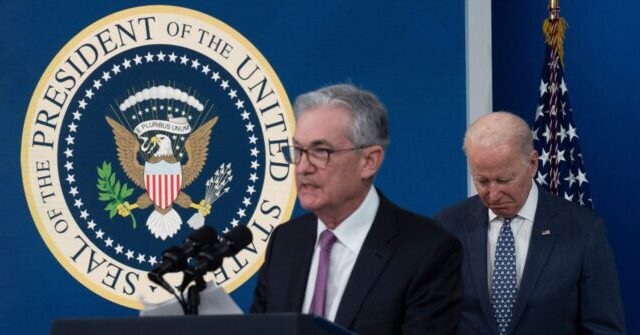Prices paid to American companies rose in January by more than expected as inflation returned to goods and continued in services, highlighting the ongoing legacy of the Biden administration’s economic program.
The producer price index for final demand climbed 0.4 percent from a month earlier following an upwardly revised 0.5 percent increase in December, the Bureau of Labor Statistics said Thursday. The median forecast in Econoday’s survey of economists called for a 0.3 percent gain. Compared with a year ago, the producer price index rose 3.5 percent.
The PPI report showed a 1.1 percent rise in food prices, driven by a 44 percent surge in egg prices from the previous month as an avian influenza outbreak continued to disrupt U.S. poultry flocks. Energy prices climbed 1.7 percent. Stripping out food and energy, the index advanced 0.3 percent on the month and 3.6 percent from a year earlier.
Final demand services prices rose 0.3 percent in January. The index for final demand goods moved up 0.6 percent in January, the fourth consecutive monthly rise. Softening goods prices had been a key reason that overall inflation had been falling last year but this seems to have stalled last year. Excluding food and energy, final demand goods prices rose by a more modest 0.1 percent.
The produce price index data come on the heels of a hotter-than-expected consumer price index report, which showed core inflation at its fastest pace since March. The figures have dimmed prospects for multiple Federal Reserve rate cuts this year, with some economists now questioning whether policymakers will cut at all or even if the Fed’s next move might be a hike.
The producer price index (PPI) is often mistakenly called a measure of wholesale prices, a confusion that goes back to its original name as the wholesale price index. In fact, the index has never been a measure of wholesale prices and the name was changed in 1978.
The PPI for final demand measures the prices that businesses in the U.S. receive for goods, services, and construction sold for personal consumption, capital investment, government purchases, and exports. It excludes export prices, since those are paid to foreign producers, and sales taxes, which are paid to the government. The better known consumer price ondex (CPI) tracks the prices U.S. consumers pay, which means it excludes export prices but includes sales taxes. The CPI also excludes prices paid by businesses, nonprofits, and government.
Although the two measures can differ month to month, they typically track each other over time. Historically, neither is a leading indicator of the other.
The PPI also measures prices at the “intermediate demand” stage. This tracks prices paid to businesses selling goods and services before reaching the final stage of production. This includes materials, components, and services used in manufacturing, construction, and other industries. Unlike final demand, which measures prices for goods and services sold to end users, intermediate demand helps gauge cost pressures earlier in the supply chain, offering insight into potential future inflationary trends.
While overall intermediate prices fell 0.2 percent in January, the gauge of processed goods for intermediate demand rose by one percent. This was driven by an increase in energy costs, particularly diesel fuel prices. Excluding food and energy prices, prices for processed goods for intermediate demand rose 0.4 percent. Prices of unprocessed goods for intermediate demand jumped 0.5 percent, also driven by soaring energy costs.
Inflation measured by the PPI peaked at 11.6 percent in March 2022,
Read the full article here


